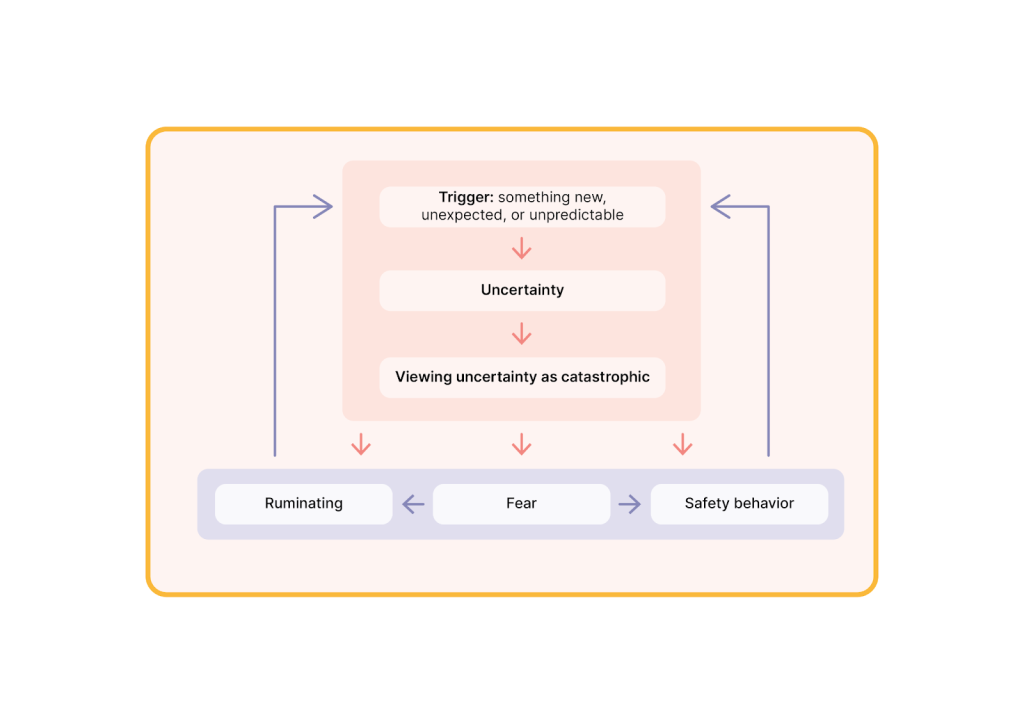When there is intolerance of uncertainty, you will perceive uncertainty more quickly as threatening or intolerable, which can lead to tension. Excessive worrying may then become a strategy to mentally prepare for all possible outcomes, especially negative ones. When you excessively ruminate, you may believe that worrying is useful. For instance, you might think that by mentally preparing, you can prevent all problems from occurring. You may also see problems as more threatening or obstructive, feel hopeless quickly, or lack confidence in your ability to solve problems.
The Model of Intolerance of Uncertainty
The model consists of two components. The first part is about the trigger and its evaluation:
- Trigger. This can be a new, unexpected, or unpredictable situation or event (e.g., a new colleague), but it can also be a thought or feeling (e.g., “I feel rushed; something will definitely go wrong soon!”).
- Uncertainty. This means that you are not 100% certain about what will happen and, therefore, do not know whether the outcome will be positive or negative.
- Viewing Uncertainty as Catastrophic. This means viewing uncertainty as something negative and, for example, being afraid that a catastrophe will occur, which you cannot handle, solve, or adequately prepare for.
The second part of the model concerns the responses that follow:
- Ruminating. This is a mental strategy to cope with uncertainty. To be prepared, you start thinking about everything that could happen and its possible consequences.
- Anxiety. This is the emotional and physical reaction. Sometimes it can even lead to feelings of panic.
- Safety Behaviours. These are behaviours aimed at reducing anxiety or tension. They provide a sense of safety and protection. For example, preparing excessively or checking things excessively.

There are three essential elements in the model that you should be aware of because you have an influence on them. For example, when you view uncertainty as catastrophic, you may overestimate the likelihood of negative outcomes or lack confidence in your problem-solving abilities. Ruminating can also lead to a false sense of control and, at the same time, trigger new uncertainties. Lastly, safety behaviours may make you feel like you need “training wheels”, preventing you from developing the confidence that you can handle situations without relying on them. You also won’t discover if your prediction that things will go wrong is accurate if you don’t try doing things differently. When you are unable to apply safety behaviours, it becomes a new trigger once again.
Source
Bottesi, G., Ghisi, M., Carraro, E., Barclay, N., Payne, R., & Freeston, M. H. (2016). Revising the intolerance of uncertainty model of generalized anxiety disorder: evidence from UK and Italian undergraduate samples. Frontiers in Psychology, 7, 1723.

 Print
Print 
